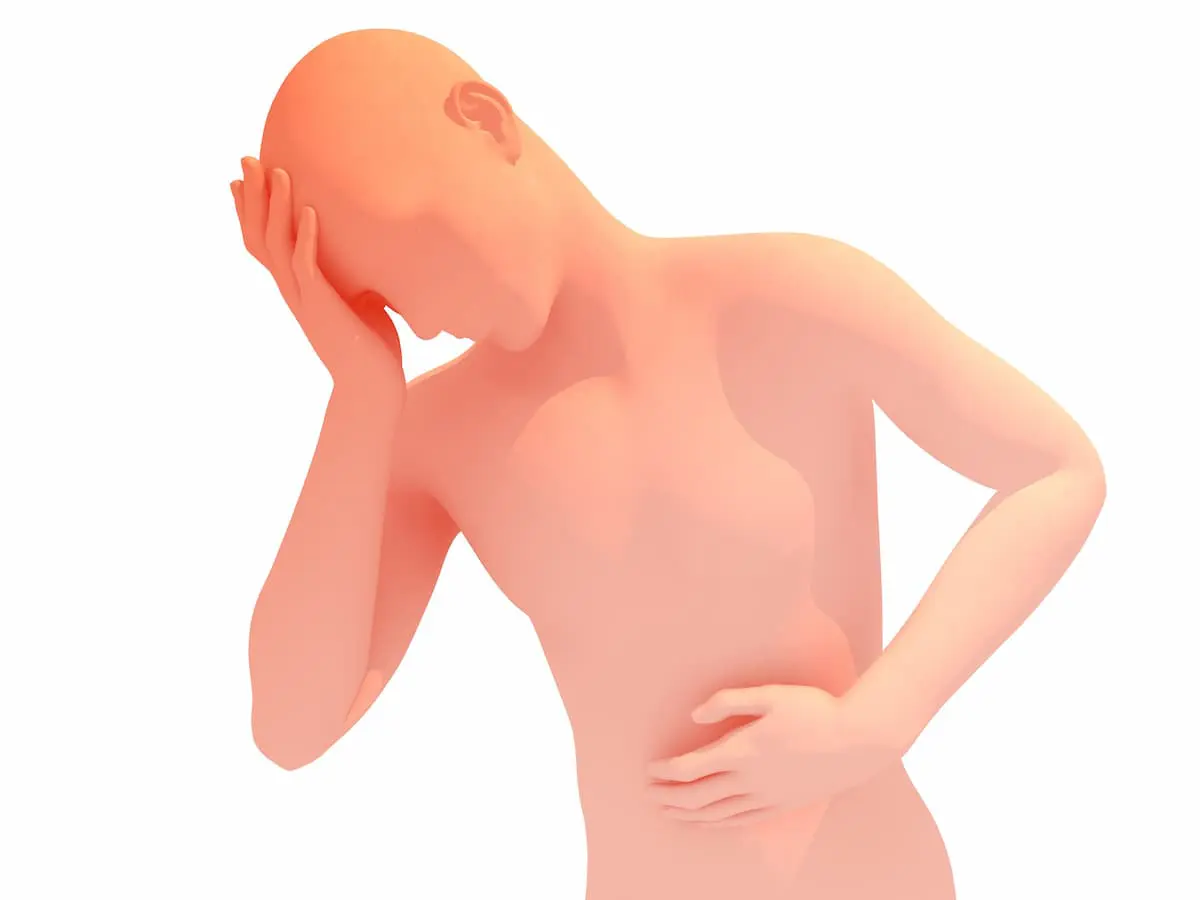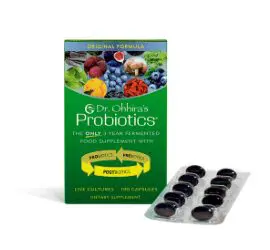Posted on January 12, 2017
by Karen Morse in Natural Practitioner Magazine
After determining the root cause of their patients’ bone, joint and muscle care issues, natural health practitioners have a wide array of products and therapies to choose from.
Traditional methods for treating bone, joint and muscular health conditions have taken a backseat to the booming industry of natural medicine.
Often, consumers who used to reach for pharmaceutical and over-the-counter products are now having success with vitamins, minerals, and other natural remedies meeting the majority of their health care needs. After determining the root cause of their patients’ bone, joint and muscle care issues, natural health practitioners have a wide array of products and therapies to choose from.
The prevalence of bone, joint and muscular disorders in the United States has risen over the past several decades. Age is a risk factor, as are a number of lifestyle factors including nutrition, exercise, smoking and alcohol use.
“According to the Centers for Disease Control & Prevention (CDC), over 52 million Americans had been diagnosed with some form of arthritis,” said Ross Pelton, RPh, PhD, CCN, the scientific director for Essential Formulas Incorporated in Texas. “However, by 2040, the number of U.S. adults projected to have doctor-diagnosed arthritis will rise to 78 million.”
Osteoarthritis, also referred to as degenerative joint disease, is the most common form of arthritis according to the CDC. They estimate that osteoarthritis affects approximately 26.9 million adults in the United States, up from 21 million in 1990, and these numbers are increasing.
Skeletal muscle system disorders are numerous and most patients present symptoms of weakness, cramping, stiffness and painful spasms, according to the National Institutes of Health (NIH). “A big part of that is due to an aging population, and muscle and joint issues simply come with the territory as these structures break down,” said Cheryl Myers, Wisconsin-based Euromedica’s chief of education and scientific affairs. “A 2012 survey found that back pain, arthritis and other muscle, joint and bone disorders affect more than 1.7 billion people around the world. And, since bone and joint disorders are reported to affect about half of all people age 50 and above, there’s a strong chance that this will be an ongoing concern for decades.”
Younger customers are also important drivers in this category. “There are many younger people who are very active in the outdoors, organized traditional sports and in many other exercise regimens that have become especially popular in recent years, including parkour, mud runs and Crossfit training,” Myers stated.
Dr. Serena Goldstein, a naturopathic doctor who practices in New York, NY and sits on Natural Practitioner’s Editorial Advisory Board, explained that the causes of bone, joint and muscle disorders can have various etiologies since each structure is made up of different material. “‘Wear and tear’ or overusing the same motion, poor posture, prolonged immobilization, or a more traumatic incident may result in a sprain, fracture or break,” she explained. She also highlighted the importance of considering other organ systems that could contribute to bone, joint and muscular health disorders. The faster metabolism caused by hyperthyroidism, for example, could break down bone. Osteoporosis and hyperparathyroidism are other examples of disease conditions that affect the bones.
Myers agreed. “There are many things that contribute to disorders: high levels of activity, low intakes of bone and muscle-building nutrients, genetic predisposition, aging, or a combination of all of the above,” she stated. “If you’re active and younger, you may start to notice some of the issues early on. If you have a fairly moderate level of activity in your life, it may take a few years, but eventually you’ll want some extra support for your joints, muscles and bones. That’s why an integrative approach is so ideal: it matches an individual with treatment and a regimen that best suits their whole life and person.”
Taking a good medical history from the patient can really help practitioners identify sources of pain, added Dr. Goldstein.
Approaches to Treatment
After identifying the root cause of the bone, joint, or muscle condition, the practitioner can then consider and select the best treatment options. “If the disorder is caused by another organ system, then the approach should focus on maximizing therapies to encompass the physiological systems that contribute to their discomfort,” explained Dr. Goldstein. Since the practitioner’s goal is to make the patient feel better, diet and lifestyle should be examined before recommending supplements. “Supplements are literally to supplement, not replace, an unhealthy lifestyle,” she pointed out.
In addition to oral supplementation, topical creams and ointments using herbs and homeopathic medicines should be considered. Dr. Goldstein advised that these are great to promote healing and pain relief for patients, as they can be applied directly to the affected area.
“The knowledge and ability to consider their multiple risk factors (e.g. genetics, musculoskeletal health, food allergies, emotions) helps guide therapies to continue addressing the root cause, as two people with the same condition may experience different types of pain,” she stated. “Continuously asking ‘why,’ and having the knowledge of conventional and natural medicine allows us to broaden our scope of considering diagnosis beyond just pain.”
In the past decade, consumers have become more informed and involved in decisions about their health, seeking natural products as solutions. “The need, however, is not so much for the supplements themselves as they now saturate the shelves, but the information around the quality as the internet can overwhelm most people with information,” Dr. Goldstein said.
Myers agreed. “In a very real sense, practitioners have ‘the inside scoop’ about which natural medicines use clinically-studied ingredients and not only address the problems at hand, but provide a lot of other overall benefits as well. That’s a far cry from the one-track style of most prescription and over-the-counter drugs,” she emphasized.
Bone, Joint and Muscle Health Supplements
Vitamins and Minerals
For bone health, Dr. Goldstein recommended supplements with combinations of vitamins and minerals such as calcium, vitamins D and K, phosphorus, silica and magnesium to balance the nutrients that make up healthy bones. “Vitamin C is very important for joint and muscle health, as it helps with healing and integrity,” she said.
Bone-Sil from Euromedica supports healthy bone structure and density, according to the company. In a special process, the silica used in Bone-Sil is extracted while still attached to the bioflavonoids from the silica plant that supports its activity in the body. “The silica in Bone-Sil was shown to increase absorption of calcium into the bone by an average of 50 percent,” Myers explained.
A randomized, double-blind, placebo-controlled study over 12 months revealed that Bone-Sil supported bone health and strength in women.
“Organic silica also has positive effects on the formation of collagen, too, which is a major component of living bone tissue,” Myers acknowledged. “That’s why silica—provided in the right form—is so valuable for stabilizing osteoporosis and osteopenia, and helping with other bone health issues as well.”
Natural Anti-inflammatories
For muscular tension and cramping, Patient One MediNutritionals based in New York offers MuscleCare, an herbal blend including valerian root, white willow and passion flower that help to relieve the pain associated with tight and tense muscles.
Valerian root is used as a sedative and muscle relaxant, aiding relaxation and promoting a restful sleep. Passion flower increases the levels of gamma-amino butyric acid (GABA) in the brain, which results in a state of relaxation. White willow bark contains a compound known as salicin, a pain reliever similar to aspirin. It is responsible for the pain-relieving and anti-inflammatory effects of MuscleCare.
MuscleCare also includes essential electrolytes—magnesium, calcium and potassium—to ensure proper functioning of the muscles and nervous system. “MuscleCare is so popular that we added two sizes and now offer it in a 90-, 180-, and a 30-capsule travel size,” said Kathy McIntee of Patient One.
Euromedica offers two powerful herbal formulas for practitioners to offer their patients who suffer from joint pain and mobility issues.
Curaphen Extra Strength is a professional pain formula with four ingredients including clinically tested curcumin (BCM-95) blended with turmeric oils for enhanced absorption and blood retention. “It’s the perfect recommendation for anyone who simply has occasional muscle pain, or someone who suffers from ongoing issues related to range of motion or other chronic conditions,” said Myers.
The formulation also contains boswellia, an Indian medicinal plant known to reduce pain as well as DLPA, which helps prevent the breakdown of enkephalins, a natural pain-killing substance found in the brain. “Additionally,” shared Myers, “this formula includes nattokinase, an enzyme from fermented soybean that increases circulation, and enables the other ingredients to even more effectively reach the areas in the body where they are needed the most.”
ArthoMed is another joint and spine health formula from Euromedica. In addition to the curcumin and boswellia offered in Curaphen Extra Strength, Arthomed contains two other herbal ingredients—devil’s claw and amla.
“Devil’s claw can help practitioners relieve patients’ arthritis inflammation and protect joints and cartilage for greater mobility,” stated Myers. “In a clinical study, devil’s claw relieved hip pain by 54 percent and knee pain by 38 percent in only eight weeks. The devil’s claw extract in ArthoMed is a specialized, concentrated extract standardized to provide the key compounds, harpagosides, and shown to reduce COX-2 activity by 31 percent.” Amla, also referred to as Indian gooseberry, also exhibits anti-inflammatory activity that can help protect both collage and cartilage.
“ArthoMed is a great choice for anyone with range-of-motion issues who may be finding their mobility and flexibility declining,” Myers added. “It can really help rebuild the ease that people feel they are missing due to age or repeated motion.”
For muscular pain and inflammation, Euromedica also offers a topical comfrey formula called Traumaplant Comfrey Cream. This soothing cream uses a special variety of the comfrey herb known as Symphytum x uplandicum NYMAN, which is completely free of pyrrolizidine alkaloids (PAs)—compounds that may be toxic to the liver. “Traumaplant is soothing, safe, and speedy,” said Myers. It treats injuries of all kinds, including open wounds and knee and ankle sprains.
Probiotics
Results from recent studies link probiotics to more than just better gut health. Probiotics are linked to brain chemistry, weight management and even better bone health. “A healthy microbiome reduces inflammation and at the same time, produces nutrients that are required for bone health and also regulates digestion and absorption of nutrients required for bone, joint and muscle health,” said Essential Formula’s Pelton.
A 2003 study with male and female subjects between the ages of 20 and 70 found that a lactic acidic bacteria product known as OM-X improved bone health by raising bone mineral content and improving bone mineral density.
Essential Formulas offers Dr. Ohhira’s Probiotics Professional Formula, a balance of probiotic bacteria, prebiotic foods and postbiotic metabolites great for creating a healthy microbiome to enhance bone health. Under the brand name Reg’Activ, Essential Formulas markets additional specialized probiotics that boost levels of the antioxidant glutathione. “Since glutathione is the master antioxidant,” explained Pelton, “boosting glutathione levels could conceivably reduce the inflammation and related free radical activity in bone, joint and muscle diseases.”
The Practitioner Market
“One of the strengths that practitioners have is they understand the ramifications of the overuse of painkillers—over-the-counter or prescription,” explained Myers. “They know (as do many patients) that the side effects of painkillers along with the epidemic of addiction to some of the most over-prescribed drugs is simply not a workable solution.”
“Practitioners can have a large beneficial impact on reducing the incidence of bone, joint and muscle diseases by educating patients about the importance of a healthy diet, regular exercise and the appropriate use of supplements that reduce inflammation and promote the development of overall health,” added Pelton. Just telling patients to take supplements isn’t enough, Pelton warned. “Follow through and compliance are much better if patients understand how various products work and why they are important,” he maintained.
Dr. Goldstein stressed the importance of keeping the patient’s “big picture” in mind, understanding what they are presenting with and why the pain may be present. “Further, if someone is not improving,” she stated, “continue to question why or consider another organ system or structure, their environment, a mental/emotional component and refer to other professionals as needed.”
References:
Antony, B., et al. “A pilot cross-over study to evaluate human oral bioavailability of BCM-95® CG (BiocurcumaxTM), a novel bioenhanced preparation of curcumin.” Indian Journal of Pharmaceutical Sciences 70.4 (2008): 445.
A double-blind, placebo-controlled randomized study of the effect of Trica-Sil on several biochemical markers of the bone remodeling. CERN (Lorient, France) 2005. Data unpublished.
Barna M, Kucera A, Hladicova M, et al. “Wound healing effects of a Symphytum herb extract cream (Symphytum x uplandicum NYMAN): Results of a randomized, controlled double-blind study.” Wien Med Wochenschr. 2007;157:569-574.
Kawakami M, Ohhira I, et al. “The Influence of Lactic Acid Bacteria (OM-X) on Bone Structure.” Journal of Applied Nutrition, Vol. 53(1): 2003.
Marietta, Eric V., et al. “Suppression of Inflammatory Arthritis by Human Gut‐Derived Prevotella histicola in Humanized Mice.” Arthritis & Rheumatology 68.12 (2016): 2878-2888.
Sidebar:
Gut Health and Rheumatoid Arthritis
According to a 2016 study, gut bacteria may be able to predict susceptibility to rheumatoid arthritis, an autoimmune disorder affecting more than 1.5 million Americans that causes painful swelling in the joints.
Veena Taneja, PhD, an immunologist at Mayo Clinic’s Center for Individualized Medicine and her team identified intestinal bacteria as a possible cause of the disease, indicating that tests for specific gut bacteria could help health professionals predict and prevent the onset of rheumatoid arthritis. Additionally, the research could provide data to provide more effective treatments for those who already have the disease.
A study published in Arthritis and Rheumatology compared a group of arthritis-susceptible mice treated with the bacterium Prevotella histicola to a group that was not given treatment. The study found that mice treated with the bacterium had fewer and less severe symptoms and fewer inflammatory conditions associated with rheumatoid arthritis than those who didn’t receive treatment.
While no human trials have taken place, the mice’s immune systems and arthritis mimic that of humans, which is promising for future human studies.
In a press release, study co-author Joseph Murray, MD, a Mayo Clinic gastroenterologist said, “since this bacterium is a part of healthy human gut, treatment is less likely to have side effects.”
For More Information:
Essential Formulas, Inc., www.essentialformulas.com
Euromedica, www.euromedicausa.com
Patient One, www.patientoneformulas.com
Article Source: https://naturalpractitionermag.com/the-root-of-the-problem/






